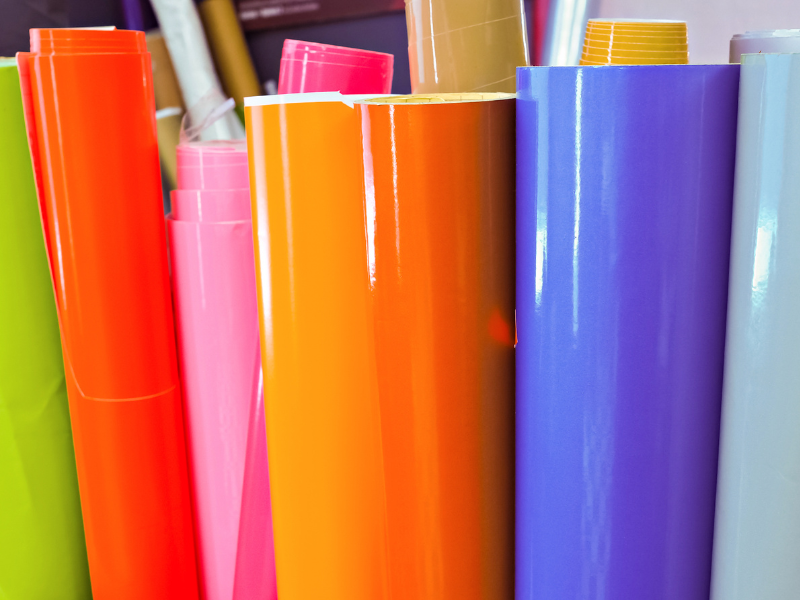Color Sells

Color Sells
We’ve discussed the 40/40/20 rule, which is a suggested formula for creating campaign success with 40% of your campaign is the data/mailing list, 40% is the offer, and 20% is the creative.
Let’s look at a portion of that 20% creative aspect. If the average consumer spends 2-5 seconds with a mail piece before they read further or discard, the creative design of the piece must be compelling enough to fill that 2-5 seconds and leave the consumer wanting more. All the basic elements of design are important in the creation of that design, but consumers will likely react to color first.
Choosing the right colors at the right time is vital to keep consumers engaged. We know that colors can evoke certain feelings, and this is especially when selling products or services. Color has a transformative and psychological power in your creative design. See which colors might trigger your audience’s emotions and make a perfect fit for your mail piece!
Red
We are accustomed to red being a universal signal for things like terror, violence, and fear as one of the most instantly recognizable connections is blood. But in advertising and creative design, red can communicate passion and love. It also has the power to encourage appetite, create urgency and promote survival.
Use red sparingly and in the correct combinations. Avoid the overuse of red combined with aggressive copy, unless your business or product promotes products and services like termination or removal.
Leading brands: Target, Coca-Cola, Netflix, YouTube
Orange
Orange is the combination of red’s power with yellow’s fun, creating a sense of comfort. Orange, when used properly, can promote affordability while remaining friendly and motivational.
Different shades and tints of orange can communicate different things and evoke different feelings. For instance, a mail piece that employs a golden orange may communicate wisdom and wealth, while a dark orange may evoke feelings of distrust.
Leading brands: Nickelodeon, Home Depot, Payless, Fanta
Yellow
Yellow is the color of joy and optimism. Often associated with spring and summer time, yellow has the power to make consumers feel happy while also creating a sense of urgency. Yellow’s remarkably full spectrum of shades and tints makes it a strong color to use in advertisement, and it comes as no surprise that yellow is the first color infants react to.
Yellow can be used to grab a consumer’s attention from far away. It is interesting that many brands utilizing yellow are companies that are easily accessible via highway travel for quick bites to eat and superior service gas!
Leading brands: McDonalds, Shell, Denny’s, Best Buy
Green
Green is a very powerful color to use in advertisement as it is the color that is easiest to the eyes. Green is known to relieve stress as it promotes balance and harmony. Shades and tints of green can evoke feelings of peace, protection, and emotional healing. They can also promote health, freshness, serenity and money.
Green is ideal for direct mail and companies directly related to healthy food or the safety of medical products.
Leading Brands: Whole Foods, Starbucks, Publix, Animal Planet
Blue
Blue is the most commonly used color in direct mail campaigns as it promotes trust, dependability, fiscal responsibility, and security. Men are more likely to respond to blue, so if targeting men’s products or services, blue is a great color to use. Shades and tints of blue can be mentally soothing and can suppress appetite.
Avoid using blue for cooking products, foods or beverages. Also, be wary of using blue in great amounts as it can be perceived as distant, cold or unfriendly.
Leading Brands: Facebook (and other social media sites such as Twitter, LinkedIn, Skype, WordPress, and Vimeo), AT&T, Boeing, Bank of America
Purple
Purple is an incredibly strong color in advertisement and creative design. It promotes imagination, wisdom and creativity while remaining smoothing and emotional. Purple is a great balance of red’s energy with blue’s stability. It can also evoke feelings of luxury, loyalty, courage, mystery, spirituality and problem- solving.
Women tend to respond well to light purple. Bright shades of purple are great for promoting children’s products. Purple is a very versatile and powerful color that can be used in several different shades and tints to make a strong impact.
Leading Brands: Hallmark, Taco Bell, New York University, YMCA
Pink
Pink is a great color to use for communicating that your product or service is caring, understanding and nurturing. It promotes fun and youthfulness, with lighter shades evoking feelings of romance and delicacy. Movements and causes for Breast Cancer Awareness will use pink to communicate hope, compassion and unconditional love.
Overuse of pink can be draining and can also suggest a lack of power.
Leading brands: Barbie, Baskin Robbins, T-Mobile
Black
Black is a commonly disputed color in creative design with varying reports and opinions. Black can communicate power, mystery, and sophistication with a hint of status. High-end businesses will use black as it can evoke feelings of luxury and control.
Be careful when using black as many consumers associate black as the universal symbol of death. Additionally, when employing a black background, consumers can have a tough time reading text.
Leading brands: Adidas, World Wildlife Fund, New York Times, Chanel
White
White is associated with purity and innocence, which is great for non-profit companies and medical companies. White can promote idea creation evokes a feeling of completeness.
Overuse of white can cause isolation, loneliness, and emptiness.
Leading brand: Apple
